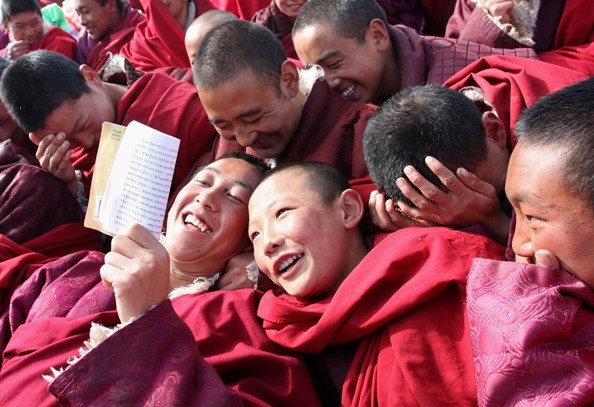China's Ethnic Publishing House will publish the first encyclopedic dictionary featuring the Tibetan language by late 2015, Women of China reported.
Gyangkar, an editor at the China Ethnic Publishing House, said that there will be 13 volumes of the said dictionary which will cover technology, medicine, phonology, Buddhism, Nyaya philosophy, rhetoric, phraseology, prosody, drama, astrology, Tibetan literature, Bon belief and Tibetan culture.
By the end of this year, the first three volumes will be published first, followed by the remaining 15 that are expected to be finished by 2018, said Gyangkar.
The Chinese government invested an estimated 10 million yuan ($1.6 million) to fund the said publication. The compilation started back in 2006 through the joint efforts of more than 10 Tibetan language professionals from Beijing and China's vast native Tibetan-speaking regions.
Around 150,000 entries will comprise the dictionary, which is three times greater than that of the Tibetan-Chinese dictionary released in 1985, the most wide-ranged and complete Tibetan-language reference book until today.
Also, additional 9,000 new words and 60,000 technical terms will be included. WeChat, the most popular instant messaging tool in China, will be called "trinqiong" in the Tibetan dictionary. "Broadband" will be called "tayang" and "robot" will be called "trimen," said Gyangkar.
Trinley Qoizha, deputy head of the Tibet regional compilation and translation bureau, said: "Language is a mirror of the times."
"New words reflect the rapid development in Tibet in terms of politics, economy, culture and education," said Qoizha, adding that this development adds energy to the Tibetan language.
Qoizha, 78, and a contributor to the dictionary, expressed his happiness that his dream will finally come true by the birth of the new Tibetan dictionary.
"The new dictionary must be very heavy," he said. "I'm afraid it is too heavy for me."
From the 17th century, Tibetan is considered as one of the most ancient languages in China. In the present, around 8 million people in China's Tibetan region and the neighboring countries of India, Nepal and Bhutan still use the language.
In 1881, the first to compile a Tibetan-English dictionary was the German H.A. Jaschke.
The most popular Tibetan-English dictionary was compiled by Sarat Chandra Das, an Indian scholar. However, several biased terms were included. For instance, on page 713, one of the entries states that "the Chinese hated all foreigners," informed Qoizha, who is also the former president of the Tibet People's Publishing House.
After eight years of tremendous work, Qoizha, together with his colleagues, was able to publish a Tibetan-Chinese dictionary with 53,000 entries in 1985.
Wangchug, 69, a Tibetan language translator, said: "The dictionary is getting thicker, more professional and encyclopedic, which is strong proof of Tibet's cultural development."



























